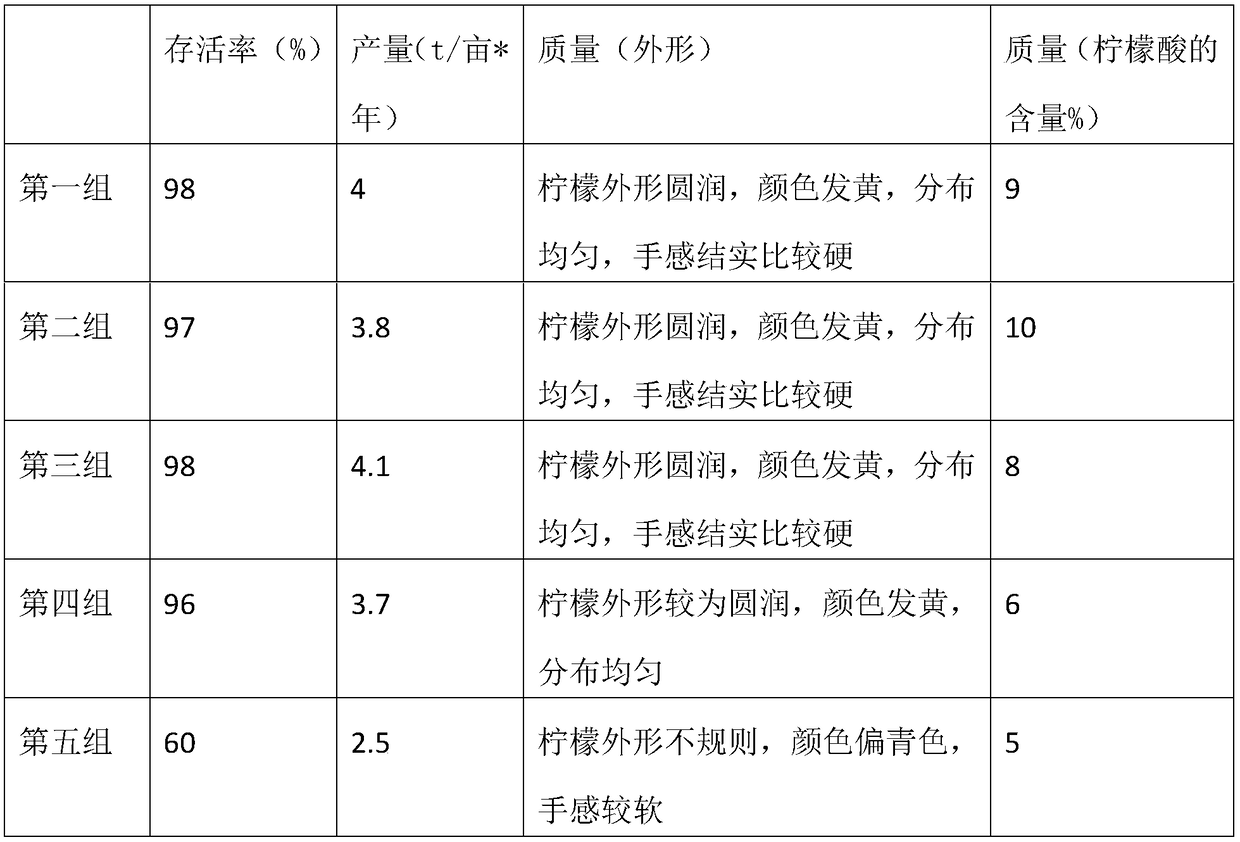Lemon plantation method
A planting method and lemon technology, applied in the field of crop cultivation, can solve the problem of not having a multi-stage requirement for a fertilizer, and achieve the effects of being beneficial to water absorption and water retention, enhancing activity, and lasting fertility
- Summary
- Abstract
- Description
- Claims
- Application Information
AI Technical Summary
Problems solved by technology
Method used
Image
Examples
Embodiment 1
[0021] Embodiment 1, a kind of planting method of lemon, comprises planting fertilization and repeated topdressing, and what field planting fertilization and repeated topdressing use is lemon organic fertilizer, and the raw material of lemon organic fertilizer is counted as: 10 parts of straw, 10 parts of bagasse, 5 parts of kiwi fruit pomace, 20 parts of walnut shell residue, 50 parts of landfill topsoil, 50 parts of decomposed manure, 1 part of EM bacteria and 50 parts of ferrous sulfate solution, during preparation Firstly, mix straw, bagasse, kiwifruit skin residue and walnut shell residue and crush them into 1-3cm mixed fragments, mix and crush the landfill topsoil and decomposed manure through a 10-20 mesh sieve to obtain a mixed fertilizer, and mix the mixed fragments with The mixed fertilizer is mixed together, then evenly mixed with EM bacteria, then sprayed with ferrous sulfate solution, covered with film and fermented for 5 to 10 days, sprayed with starch solution, g...
Embodiment 2
[0023] The difference between Example 2 and Example 1 is that the raw materials of the lemon organic fertilizer are replaced by parts by weight: 15 parts of straw, 15 parts of bagasse, 8 parts of kiwi fruit pomace, 25 parts of walnut shell bagasse, 100 parts of landfill topsoil, 80 parts of decomposed manure, 1 part of EM bacteria and 80 parts of ferrous sulfate solution.
Embodiment 3
[0024] The difference between Example 3 and Example 1 is that the raw materials of the lemon organic fertilizer are replaced by parts by weight: 20 parts of straw, 20 parts of bagasse, 10 parts of kiwi fruit pomace, 30 parts of walnut shell bagasse, 80 parts of landfill topsoil, 100 parts of decomposed manure, 2 parts of EM bacteria and 100 parts of ferrous sulfate solution.
[0025] Wherein, each portion of the above represents 1kg.
[0026] After testing, the ingredients in the lemon organic fertilizer contain N+P 2 o 5 +K 2 O+Ga is more than 6% and less than 10%, amino acid content is more than 12% and less than 15%, humic acid and other organic acids are more than 15% and less than 20%, effective bacteria are more than 20 million / g, and organic matter is more than 50%.
[0027] Select 20 pieces of land under the same environment to be divided into five groups, and carry out experimental verification, wherein the first group carries out compound fertilizer and fertilizatio...
PUM
 Login to View More
Login to View More Abstract
Description
Claims
Application Information
 Login to View More
Login to View More - R&D
- Intellectual Property
- Life Sciences
- Materials
- Tech Scout
- Unparalleled Data Quality
- Higher Quality Content
- 60% Fewer Hallucinations
Browse by: Latest US Patents, China's latest patents, Technical Efficacy Thesaurus, Application Domain, Technology Topic, Popular Technical Reports.
© 2025 PatSnap. All rights reserved.Legal|Privacy policy|Modern Slavery Act Transparency Statement|Sitemap|About US| Contact US: help@patsnap.com

